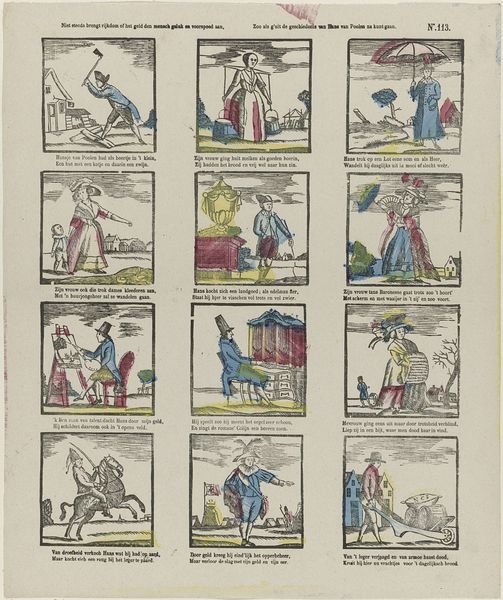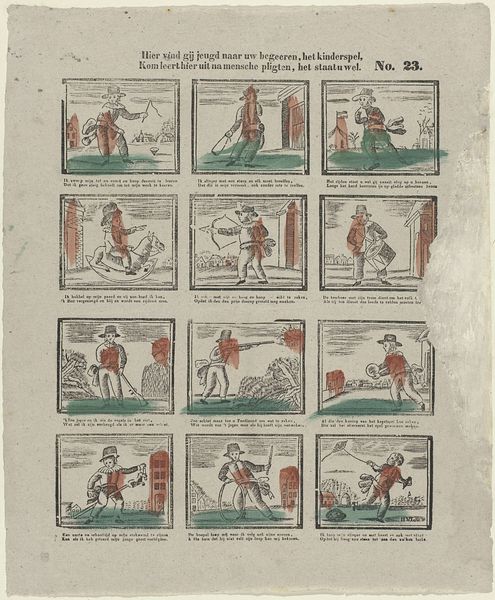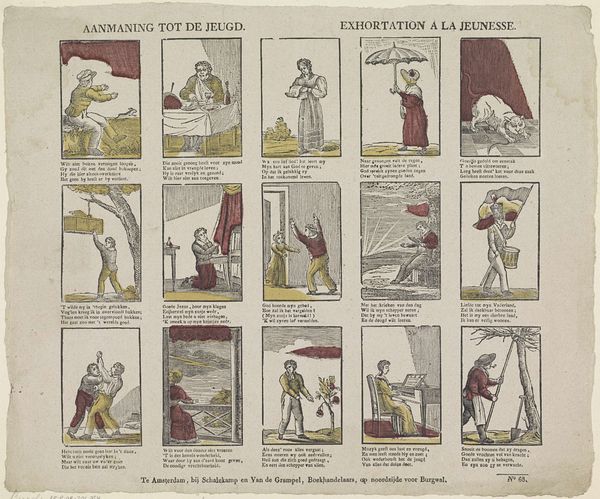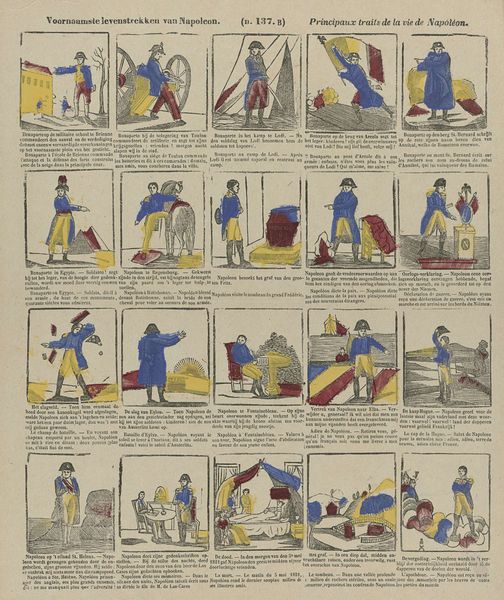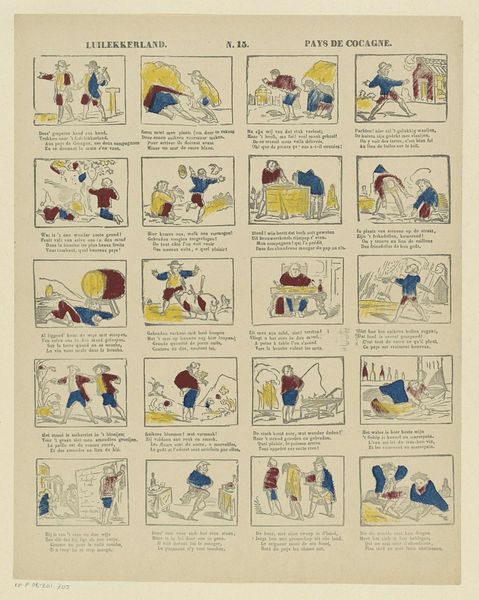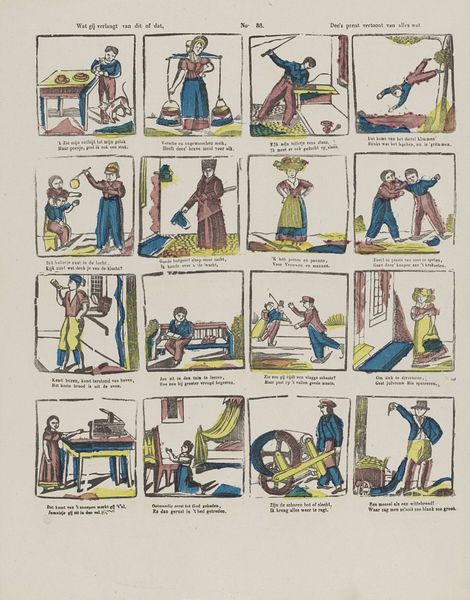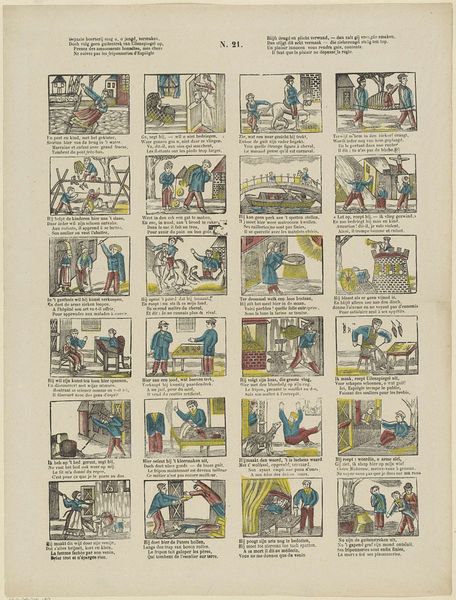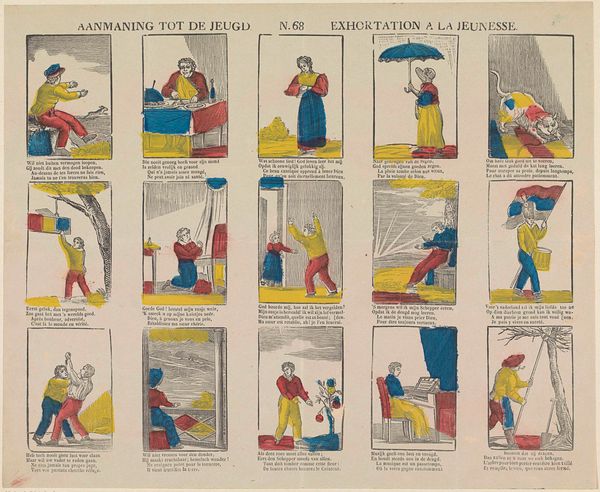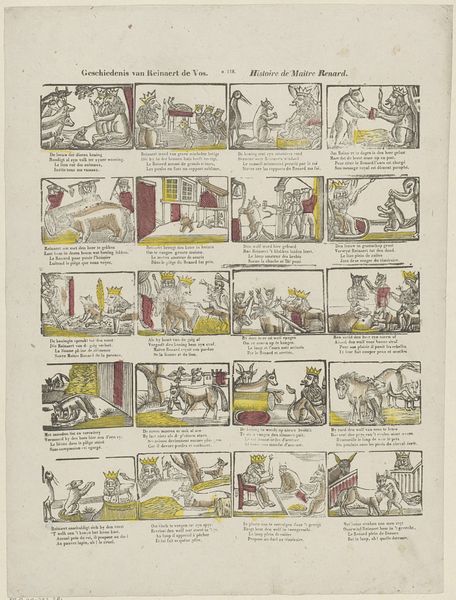
graphic-art, print
#
graphic-art
#
comic strip sketch
#
narrative-art
# print
#
comic
#
genre-painting
Dimensions: height 396 mm, width 341 mm
Copyright: Rijks Museum: Open Domain
Curator: Look at this captivating 19th-century print, “Klaes Kapoen / Colas Capon,” a narrative artwork created sometime between 1833 and 1856 by Glenisson & Van Genechten. What catches your eye first? Editor: Immediately, it's the grid format. Twenty small scenes, contained like a comic strip. The visual style itself feels quite raw, almost primitive in its rendering of form and space, emphasizing the storyline rather than precise artistic polish. Curator: The sequence portrays the adventures—or perhaps misadventures—of Klaes Kapoen, also known as Colas Capon. Given its genre-painting aspects, we must also consider it a form of social commentary about its time. Editor: I see the way the characters are depicted; each figure adopts the same colors, mirroring one another scene-to-scene, the simple but repeated color motifs help guide the eye sequentially and build rhythm across the composition. The limited palette serves a structural purpose. Curator: These visuals act as social critiques. It’s crucial to examine how this ‘comic’ narrative plays into larger cultural discourses and what societal norms might be reinforced or challenged. Consider how class and individual agency are being presented. Editor: Observe, for instance, the repetition of particular shapes—the curves of the chairs, or how characters are drawn. This recurrence adds cohesion. Each panel seems self-contained and unified, lending stability to the larger narrative. Curator: Beyond mere illustration, the image tells a story about a child's behavior. I'm curious how it intersects with views of children in this period; what does the image tell us about power dynamics between parents and children in a 19th-century household? Editor: I see now how these repeated elements establish not just rhythm, but an echo, like visual rhymes. Thank you for your societal reading, giving richer interpretive avenues, it enhances the appreciation of form as well. Curator: Yes, examining it together gives us new eyes!
Comments
No comments
Be the first to comment and join the conversation on the ultimate creative platform.

